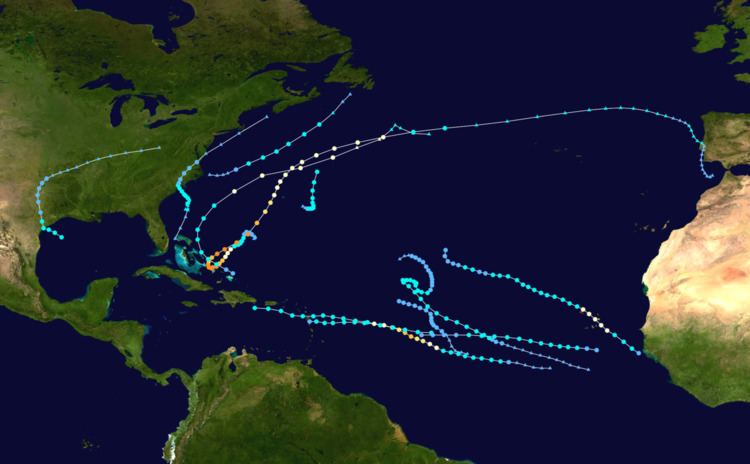 | ||
The 2015 Atlantic hurricane season was the third consecutive year to feature below-average activity, with eleven named storms. The season began on June 1 and ended on November 30, dates adopted by convention that historically describe the period in each year when most tropical cyclones form in the Atlantic basin. The season's first storm, Tropical Storm Ana, developed on May 8; the season's final storm, Hurricane Kate, lost its tropical characteristics on November 11.
Contents
The year featured twelve tropical cyclones, of which eleven intensified into tropical storms and four further intensified into hurricanes (including two major hurricanes). Several storms caused generally minor damage throughout the season. In May, Ana moved ashore the coastline of South Carolina, becoming the earliest landfalling tropical storm on record in the United States and causing two fatalities. In June, the precursor to Tropical Storm Bill caused significant flooding across Central America before the cyclone made landfall in Texas; overall, eight people were killed. In July, Tropical Storm Claudette caused minor impacts along the East Coast of the United States and Newfoundland. In August, Hurricane Danny and Tropical Storm Erika affected the Lesser Antilles and Greater Antilles; the latter caused significant damage and killed 36 people. In August, Hurricane Fred prompted the first-ever issuance of a hurricane warning in Cape Verde. The following month, Hurricane Joaquin – one of the most intense cyclones to affect the Bahamas in recorded history – caused widespread and significant damage to the island country while contributing to historic flooding across the Southeastern United States. In November, Kate impacted the Bahamas; its remnants caused minor damage across the United Kingdom.
This timeline includes information that was not operationally released, meaning that data from post-storm reviews by the National Hurricane Center, such as a storm that was not operationally warned upon, has been included. This timeline documents tropical cyclone formations, strengthening, weakening, landfalls, extratropical transitions, and dissipations during the season.
May
May 8
May 9
May 10
May 12
June
June 1
June 16
June 17
June 18
July
July 13
July 15
August
August 18
August 20
August 21
August 22
August 23
August 24
August 25
August 27
August 29
August 30
August 31
September
September 1
September 4
September 5
September 6
September 8
September 9
September 11
September 16
September 17
September 18
September 19
September 21
September 24
September 27
September 28
September 29
September 30
October
October 1
October 2
October 3
October 4
October 5
October 7
October 8
November
November 8
November 9
November 11
November 12
November 30
